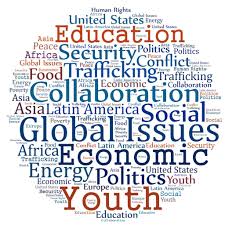From Megacities to Villages: A Global Vision for Sustainable Communities

Updated at: 2023-08-13 18:02:59 (1 year ago by Melkisedeck Leon Shine)
From Megacities to Villages: A Global Vision for Sustainable Communities
In today's rapidly changing world, the need for sustainable communities has never been more urgent. With the world's population growing at an unprecedented rate, it is essential that we shift our focus from megacities to villages, and promote global sustainable cities and communities. This global vision requires a comprehensive approach that encompasses social, economic, and environmental aspects of development. In this article, we will explore 15 detailed points on how we can achieve this vision and inspire individuals to take action.
-
Education and Awareness: The first step towards building sustainable communities is to educate and raise awareness among individuals about the importance of sustainable development. This can be done through workshops, seminars, and campaigns that highlight the benefits of sustainable living.
-
Urban Planning: A key aspect of sustainable cities is effective urban planning. By designing cities that prioritize green spaces, efficient transportation systems, and mixed-use development, we can create communities that are both environmentally friendly and socially inclusive.
-
Renewable Energy: Transitioning to renewable energy sources is crucial in reducing carbon emissions and combating climate change. Governments and communities should invest in solar, wind, and hydroelectric power to meet their energy needs sustainably.
-
Waste Management: Implementing effective waste management systems, such as recycling and composting programs, can significantly reduce the environmental impact of communities. Encouraging individuals to adopt zero-waste practices is also essential.
-
Sustainable Transportation: Developing sustainable transportation systems, such as bike lanes, pedestrian-friendly streets, and efficient public transportation, can reduce reliance on cars and promote healthier and more accessible communities.
-
Affordable Housing: Ensuring access to affordable and energy-efficient housing is vital for creating sustainable communities. Governments should prioritize affordable housing initiatives and incentivize developers to incorporate green building practices.
-
Local Agriculture: Encouraging local agriculture and supporting farmers can promote sustainable food production and reduce the carbon footprint associated with long-distance transportation. Community gardens and farmers' markets are excellent examples of initiatives that foster sustainable agriculture.
-
Water Conservation: Implementing water conservation measures, such as rainwater harvesting and efficient irrigation systems, is crucial in regions facing water scarcity. Communities should also prioritize education on water conservation practices.
-
Access to Healthcare: Sustainable communities should prioritize access to quality healthcare for all residents. Investing in healthcare facilities, promoting preventive care, and ensuring health equity are essential components of sustainable development.
-
Social Equity: Sustainable communities must address social inequalities and promote inclusivity. This can be achieved by implementing policies that provide equal opportunities for education, employment, and social services.
-
Community Engagement: Engaging the community in decision-making processes is vital for creating sustainable communities. Local residents should have a voice in shaping their neighborhoods and be actively involved in projects that promote sustainability.
-
Technology and Innovation: Embracing technological advancements and innovative solutions can accelerate the transition towards sustainable communities. Smart city technologies, such as energy-efficient buildings and digital connectivity, can enhance sustainability efforts.
-
Cultural Preservation: Sustainable communities should also prioritize cultural preservation and celebrate diversity. By preserving local traditions and heritage, communities can foster a sense of identity and promote social cohesion.
-
International Collaboration: Achieving global sustainable communities requires international collaboration and knowledge sharing. Governments, organizations, and individuals should work together to exchange ideas, best practices, and resources.
-
Empowerment and Action: Ultimately, the promotion of global sustainable cities and communities rests on the shoulders of individuals. Each person has the power to make a difference by adopting sustainable practices, advocating for change, and inspiring others to join the movement.
In conclusion, the vision of transitioning from megacities to villages and promoting global sustainable cities and communities is within our reach. By embracing education, innovation, and community engagement, we can create a better future for ourselves and future generations. Let us embark on this journey together and build a world that prioritizes social, economic, and environmental sustainability.
Are you ready to take action towards promoting global sustainable cities and communities? How can you contribute to this vision in your own community? Share your ideas and inspire others to join the movement. Together, we can create a more sustainable and united world. #SustainableCommunities #GlobalVision #PromoteUnity



